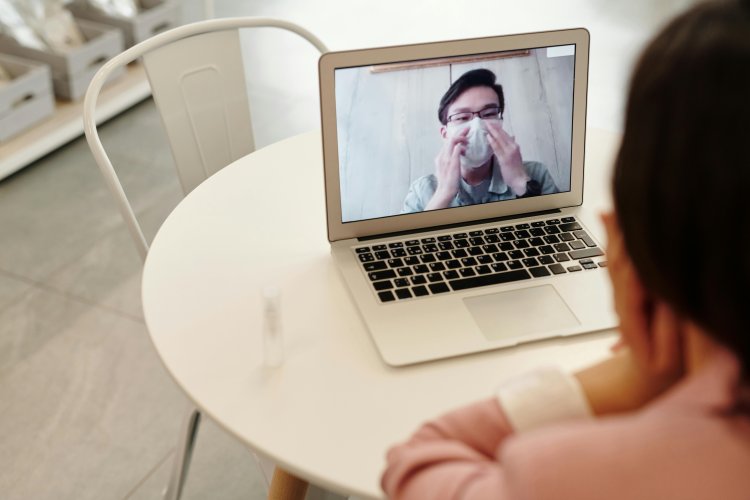Advancements in Telemedicine and Remote Patient Monitoring: Revolutionizing Healthcare Delivery
Advancements in Telemedicine and Remote Patient Monitoring: Revolutionizing Healthcare Delivery

1. Introduction:
The landscape of healthcare delivery is undergoing a transformation with the advent of telemedicine and remote patient monitoring technologies. In this blog, we will explore the latest advancements in telehealth, their impact on patient care, and the future of virtual healthcare.
2. Telemedicine: Redefining Access to Healthcare Services
Telemedicine involves the remote diagnosis and treatment of patients using telecommunications technology. This section will provide an overview of telemedicine and its role in expanding access to healthcare services, particularly in underserved areas.
3. Remote Patient Monitoring: Enhancing Care Beyond the Clinical Setting
Remote patient monitoring (RPM) enables healthcare providers to remotely track and monitor patients' health data outside of traditional clinical settings. This section will explore the benefits of RPM in managing chronic conditions and improving patient outcomes.
4. Telehealth Technologies: Platforms and Devices for Virtual Consultations
Telehealth technologies encompass a range of platforms and devices that facilitate virtual consultations between patients and healthcare providers. This section will discuss the various telehealth technologies available and their features.
5. Benefits of Telemedicine: Improving Patient Outcomes and Healthcare Efficiency
Telemedicine offers numerous benefits, including increased access to care, improved patient outcomes, and enhanced healthcare efficiency. This section will explore the advantages of telemedicine for patients, providers, and healthcare systems.
6. Challenges and Barriers to Telemedicine Adoption
Despite its potential benefits, telemedicine faces several challenges and barriers to widespread adoption, including regulatory hurdles, technological limitations, and reimbursement issues. This section will discuss the challenges associated with telemedicine implementation and strategies for overcoming them.
7. Regulatory Landscape: Navigating Legal and Ethical Considerations in Telehealth
Telemedicine is subject to a complex regulatory landscape, including licensure requirements, privacy regulations, and reimbursement policies. This section will explore the legal and ethical considerations associated with telehealth practice.
8. Telemedicine in Specialty Care: Applications Across Various Medical Disciplines
Telemedicine is increasingly being used across various medical specialties, including cardiology, dermatology, and neurology. This section will explore the applications of telemedicine in specialty care and its impact on patient outcomes.
9. Remote Patient Monitoring Devices: Innovations in Home Healthcare
Advancements in remote patient monitoring devices, such as wearable sensors and mobile health apps, are revolutionizing home healthcare. This section will discuss the latest innovations in RPM devices and their potential to improve patient engagement and adherence to treatment plans.
10. Telepsychiatry: Transforming Mental Health Care Delivery
Telepsychiatry enables remote delivery of mental health services, addressing barriers to accessing care and expanding treatment options for patients with mental health disorders. This section will explore the applications of telepsychiatry and its impact on mental healthcare delivery.
11. Telemedicine in Rural and Underserved Communities: Bridging Healthcare Gaps
Telemedicine has the potential to bridge healthcare gaps in rural and underserved communities by providing access to specialty care and reducing travel burdens for patients. This section will discuss the importance of telemedicine in addressing healthcare disparities.
12. Telemedicine Post-Pandemic: Long-term Implications and Sustainability
The COVID-19 pandemic has accelerated the adoption of telemedicine, leading to widespread acceptance and integration into healthcare delivery systems. This section will explore the long-term implications of the pandemic on telemedicine and its sustainability beyond the crisis.
13. Future Directions: Anticipated Trends and Developments in Telehealth
The future of telehealth holds promise for continued innovation and expansion, with anticipated trends such as AI-driven telemedicine, virtual reality applications, and interoperability enhancements. This section will discuss future directions in telehealth and their potential impact on healthcare delivery.
14. Conclusion:
Telemedicine and remote patient monitoring technologies are revolutionizing healthcare delivery, offering new opportunities to improve access, quality and efficiency of care. By embracing these advancements, healthcare providers can enhance patient outcomes and transform the way healthcare is delivered.
What's Your Reaction?





















